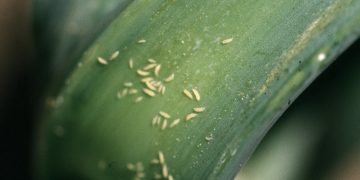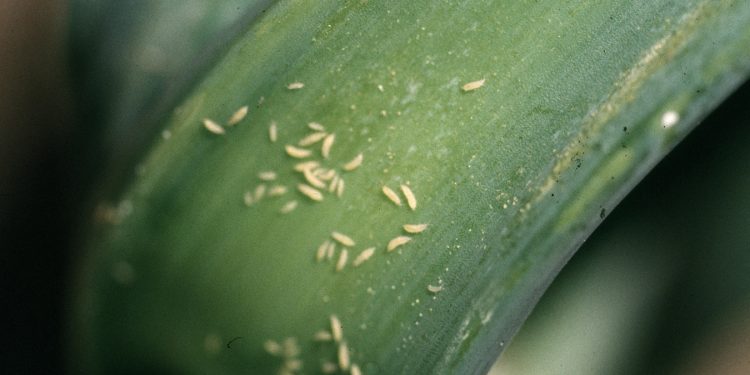Onion thrips (Thrips tabaci) is one of the most destructive pests that can cause severe damage to onion crops, leading to a significant loss in yield and quality. This article will discuss the latest data on onion thrips infestation, its impact on onion crops, and the different methods of controlling its spread.
Onion thrips infestation can cause a significant loss in onion yield and quality. According to recent data, onion thrips infestation can cause up to 100% crop loss in severe cases. The impact of onion thrips infestation on onion crops includes stunted growth, yellowing of leaves, and distorted bulbs.
To control the spread of onion thrips, farmers and agronomists can adopt several methods such as cultural control, biological control, and chemical control. Cultural control involves measures such as crop rotation, removing weeds, and using reflective mulches. Biological control involves using natural enemies such as predatory mites, parasitoids, and entomopathogenic fungi. Chemical control involves using insecticides.
Farmers and agronomists should adopt an integrated pest management approach that combines different control methods to effectively control onion thrips infestation. By implementing preventive measures and timely control methods, farmers can minimize the impact of onion thrips on onion crops and improve their yields.
In conclusion, onion thrips infestation is a severe threat to onion crops, but with proper management practices, farmers can control its spread and prevent significant yield loss. Adopting an integrated pest management approach and monitoring for the presence of onion thrips can help farmers take timely control measures and protect their crops.
#OnionThrips #PestControl #IntegratedPestManagement #CropProtection #Agriculture































